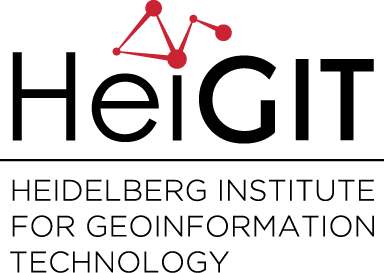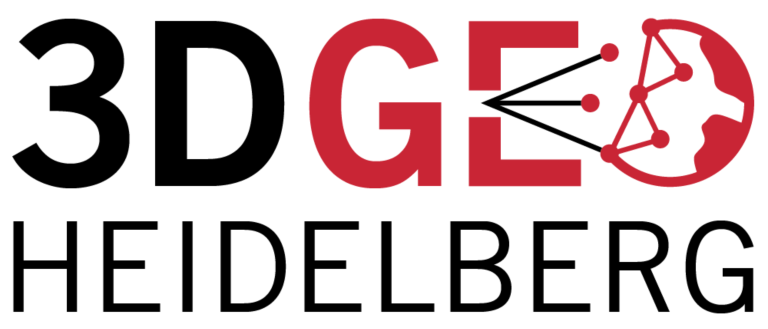Category: Research
-
Successfull PhD Defence by Clemens Jacobs on Plausibility Estimation of Citizen Science Observations for Biodiversity
Last week Dr. Clemens Jacobs successfully defended his PhD about methods for assessing the data quality of citizen science observations of organisms. Congratulations, well done!!! We wish all the very best for the future! The research aimed at using geographic context as an information source for estimating the plausibility of an observation, e.g., of a bird,…
-
SYSSIFOSS project start and first test scans
On May 1st, the SYSSIFOSS project has started and first test scans have already been conducted in the forest. Experciences from these initial testings serve as a basis for many field campaigns this summer which aim at the acquisition of high-density point clouds of 140 single trees with a RIEGL VZ-400 terrestrial laser scanner. Moreover,…
-
First test flights with brand-new UAV-borne LiDAR system
The 3DGeo group is currently testing their new UAV-borne LiDAR (ULS) system. The integrated system consists of a DJI Matrice 600 copter, a RIEGL miniVUX-1 UAV laser scanner and is complemented by an inertial measurement unit and a realtime kinematics GNSS. Combining the different components in one system allows for high-accuracy (cm) acquisition of 3D…
-
HeiGIT/ GIScience at ISCRAM conference in Valencia
19th-22nd of May, the 16th Information Systems for Crisis Response and Management (ISCRAM) conference is taking place in Valencia. Likewise to previous years, the GIScience Research Group/HeiGIT are taking part and supporting with several contributions. Martin Hilljegerdes will present a paper, based on his Master Thesis, focusing on “Evaluating the effects of consecutive hurricane hits…
-
PhD Colloquium “Deep Learning in Photogrammetry, Remote Sensing and Geospatial Information Processing”
On 14th and 15th May, our 3DGeo group members Bernhard Höfle and Lukas Winiwarter were co-organizing and participating in the 4th colloquium for PhD students working on the topic of Deep Learning and its applications in Photogrammetry, Remote Sensing and Geoinformation Processing of the Deutsche Geodätische Kommission (DGK) and the Deutsche Gesellschaft für Photogrammetrie und…
-
Sonniges „meinGrün“ Konsortiumstreffen in Heidelberg
Letzte Woche fand das zweite große Konsortiumstreffen im Projekt „meinGrün“ in Heidelberg statt. Zusammen mit unseren Projektpartnern vom IÖR , DLR , ISB AG , dem Institut für Kartographie der TU Dresden , Terra Concordia (mundraub.org) und Urbanista haben wir zwei Tage lang an der Weiterentwicklung unserer App gearbeitet, welche es Bürgerinnen in Heidelberg und…
-
Exploring OSM history: the example of health related amenities
Introduction Exploring how OpenStreetMap data developed over time across different administrative untis might reveal interesting insights into the self organizing approach of the OSM communities and can potentially be used to derive intrinsic data quality indicators. It might even be possible to estimate the completeness of OSM for a specific key-value combination as done by…
-
Usage of HELIOS for various applications
The Heidelberg LiDAR Operations Simulator (HELIOS) is an open source laser scanning simulation framework for interactive simulation and visualization of terrestrial, mobile and airborne laser scanning surveys. It can be flexibly used for teaching and training of laser scanning, development of new scanner hardware and scanning methods, or generation of artificial scan data sets to…
-
Letzte Vorbereitungen: Start der MS Wissenschaft am 16. Mai 2019
Mitmach-Exponate direkt aus der Forschung geben in der Ausstellung auf der MS Wissenschaft 2019 Einblicke in die Entwicklung und Anwendung Künstlicher Intelligenzen (KI). Die MS Wissenschaft startet ihre Tour am 16. Mai 2019 in Berlin und besucht Ende August auch Heidelberg. Das Exponat „Mensch Maschine – Forschung im Team“ zeigt wie Trainingsdaten für KI-Algorithmen erstellt…
-
How to become ohsome part 5: Measuring numbers of users editing different OSM features
Besides dealing with a snake, making quality assessments, or generating comparable statistics, one needs to know how to handle the whole functionality provided by the ohsome API to really become ohsome. And to achieve exactly that, this blog presents the last missing entry point to the API from the current toolkit, namely the /users resource. With its help you can receive aggregated…
-
HeiGIT/GIScience at Global Platform for Disaster Risk Reduction and Multi Hazard Early Warning Conference
Middle of May, Geneva becomes the gathering place for citizens, political leaders, government institutions, private sector, civil society, and scientific and technical institutions, that all jointly work towards a big objective – to manage disaster risk. In line with the Sendai Framework, the conference is focusing on and strengthening the shift from the management of…
-
Landcover monitoring with emphasis on vegetation under the climatic change pressure using multitemporal and multisource remote sensing data fusion
The new project on landcover monitoring with emphasis on vegetation under the climatic change pressure using multitemporal and multisource remote sensing data is a collaboration project funded in the framework of 4EU+ Flagship 4: Biodiversity and Sustainable Developement with Markéta Potůčková (Department of Applied Geoinformatics and Cartography, Charles University Prague) as PI of the project.…


